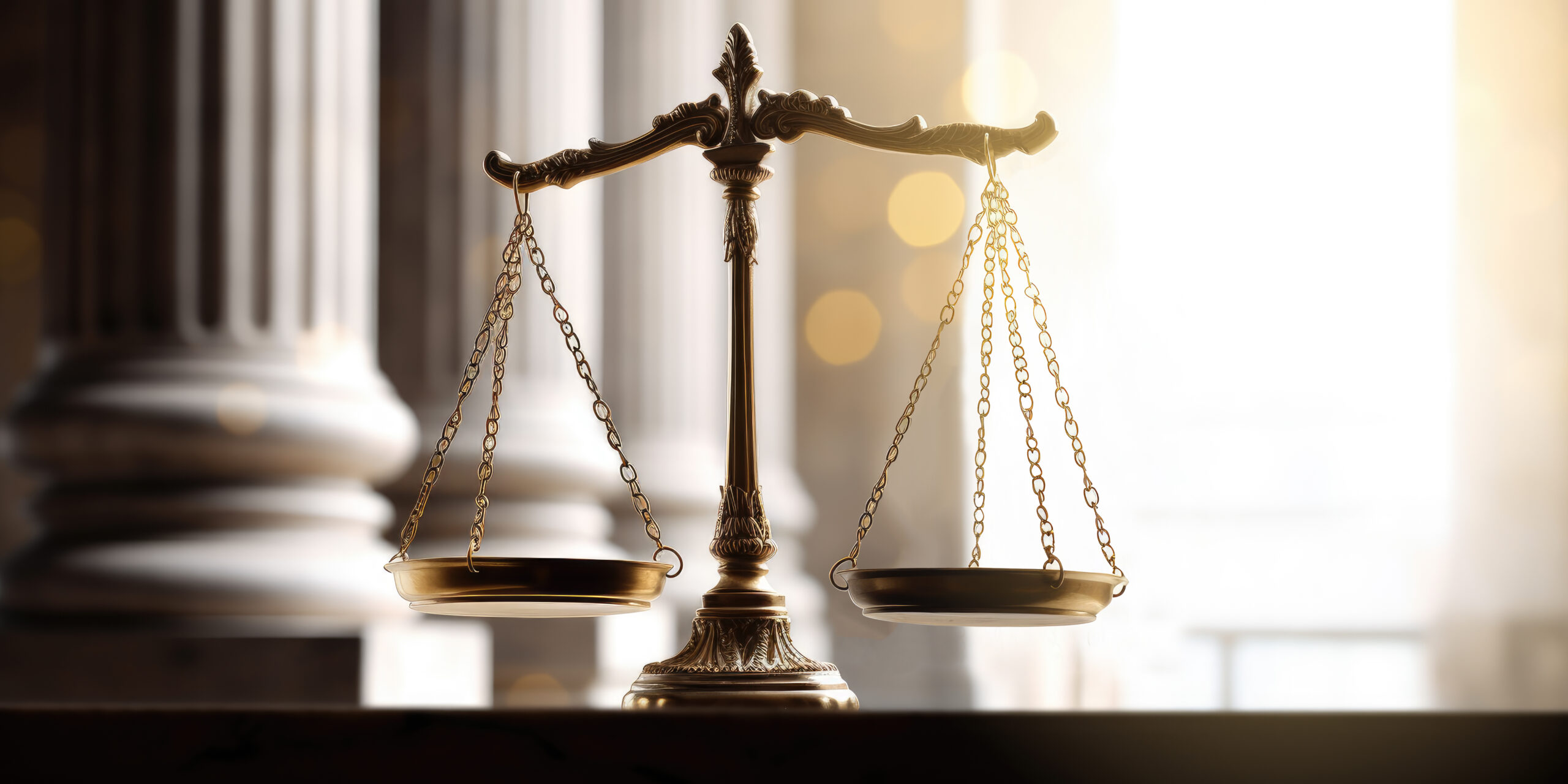International Commercial Arbitration Q2 2025

This update explores trends and developments in international commercial arbitration from a Norwegian perspective.
The Norwegian Supreme Court recently handed down a landmark judgment concerning a challenge to an arbitration award based on the alleged lack of independence and impartiality of one of the arbitrators in the panel. The heart of the matter was whether a client relationship between the arbitrator’s law firm and one of the parties raised justifiable doubts about the arbitrator’s independence and impartiality. Below, we will present the background and key implications of the decision.
Furthermore, we will, as always, provide the latest NOMA News – where we investigate the recently updated NOMA Best Practice Guidelines and CMC-Matrix, and highlight What’s On the Agenda.
The Norwegian Supreme Court clarifies the Norwegian Arbitration Act’s standard of independence and impartiality
It is a fundamental legal principle, in both court and arbitral proceedings, that the parties are entitled to an independent and impartial tribunal. This principle is set out in the Norwegian Arbitration Act, which states in sections 13 and 14 that arbitrators «shall be independent and impartial» and that an arbitrator may be challenged «if there are circumstances that give rise to justifiable doubts about his impartiality or independence.» These rules are based on the widely adopted UNCITRAL Model Law (1985).
An arbitration award issued by a tribunal that does not conform to the Arbitration Act’s standard of independence and impartiality can be set aside by Norwegian courts pursuant to section 43 of the Arbitration Act. As noted in our Q2 2023 Newsletter, a lack of independence and impartiality is a common basis for challenges to arbitral awards.
On 19 May 2025, the Norwegian Supreme Court handed down its first-ever judgment (HR-2025-921-A) concerning a challenge to an arbitration award on the grounds that the Arbitration Act’s standard of independence and impartiality was not satisfied.
The basis for the challenge was, in short, that one of the members of the arbitral tribunal was a partner in a law firm that, in an unrelated matter with no connection to the arbitrator, assisted one of the parties during the arbitration.[1] This client relationship had not been disclosed.
The Supreme Court dismissed the challenge. The court observed that a client relationship between an arbitrator’s law firm and one of the parties may give rise to justifiable doubts about the arbitrator’s independence and impartiality, but determined that the decision ultimately depends on a comprehensive assessment of the circumstances, including the nature, duration, scope, and commercial importance of the client relationship. Breach of an arbitrator’s duty of disclosure is also a relevant factor, but such breach will normally only be decisive in borderline cases. After careful consideration of the factual circumstances, the court concluded that the arbitrator’s independence and impartiality could not reasonably be questioned in this case. Considering that the requirement of independence and impartiality under the Arbitration Act is important both as a matter of principle and in practice, it is rather surprising that the Norwegian Supreme Court had not previously considered challenges on this basis. This landmark decision gives valuable guidance on the application of the Arbitration Act’s standard of independence and impartiality.
The Norwegian Supreme Court’s judgment in brief
The arbitration award that was challenged arose out of a dispute among the shareholders of a Norwegian property and infrastructure company. The arbitral tribunal held that two of the company’s shareholders – Øijord & Aanes AS and Celsa Armeringsstål AS – acted contrary to the shareholders’ agreement for the company.
One of the arbitrators had been appointed by Hordaland District Court. He was a partner in one of Norway’s major law firms. Before he was appointed, he informed the District Court that he considered himself independent and impartial. At the time of the appointment, and during the arbitration, the arbitrator’s law firm had been assisting Celsa Armeringsstål AS in an unrelated matter.
Øijord & Aanes AS challenged the arbitration, arguing that the standard of independence and impartiality was not satisfied due to the client relationship between the arbitrator’s law firm and Celsa Armeringsstål AS and the arbitrator’s failure to disclose this relationship.
The court’s key observations on the law were:
- The standard of independence and impartiality is generally the same for arbitrators as for judges. Arbitral proceedings, like court proceedings, serve the public interest and depend on public trust. However, differences in the context and nature of arbitral and court proceedings, including the aim of international harmonisation in arbitration, may affect the application of the standard.
- Whether a client relationship between an arbitrator’s law firm and one of the parties gives rise to justifiable doubts about the arbitrator’s independence and impartiality depends on a comprehensive assessment of the circumstances. The nature, scope, commercial importance, and duration of the client relationship are key factors. The arbitrator’s relationship to the client, the law firm’s size and organisational structure, and the arbitrator’s position and role within the law firm are also relevant.
- Arbitrators who are approached regarding a potential appointment must, on their own initiative, disclose any circumstances likely to give rise to justifiable doubts about their independence or impartiality. This disclosure should be made in a manner that ensures a clear record. If the arbitrator is appointed by a court, it is sufficient to provide the disclosure to the court. A breach of the duty of disclosure is relevant when assessing the arbitrator’s independence and impartiality, but such a breach will normally only be decisive in borderline cases.
The Supreme Court held that the client relationship between the arbitrator’s law firm and Celsa Armeringsstål AS did not give rise to justifiable doubts about the arbitrator’s independence and impartiality.
Although the arbitrator’s law firm assisted Celsa Armeringsstål AS over several years, the court noted that the law firm’s work was sporadic, and that the client relationship’s commercial importance to the law firm was negligible. The court observed that the law firm’s assistance was not of a strategic nature but was confined to assistance in an unrelated matter in a specific legal field. Finally, the court highlighted that there were no points of contact between the arbitrator and the client, who was assisted by a partner in a different department. The court found that the arbitrator had not disclosed the client relationship, but the non-disclosure did not alter the court’s conclusion.
The European Convention on Human Rights’ requirement of independence and impartiality and arbitration proceedings
The Supreme Court’s judgment briefly touches upon the application of the European Convention on Human Rights (ECHR) in arbitration proceedings. The Supreme Court referred to the European Court of Human Right’s (ECtHR) decision in Beg S.p.a. v. Italy and noted that the requirement of independence and impartiality set forth in article 6 (1) of the ECHR also applies to arbitration proceedings unless waived by the parties.
The concept of waiver of the rights afforded to the parties by the ECHR is of particular interest in the context of commercial arbitration. The ECHR does not prevent the settlement of commercial disputes through voluntary arbitration. Parties to a commercial dispute who have willingly entered into an arbitration agreement will be deemed to have waived many of the rights afforded to them by the ECHR, provided that the waiver was free, lawful, and unequivocal, see Mutu and Pechstein v. Switzerland.
An arbitration agreement as such will normally not constitute an unequivocal waiver of the right to an independent and impartial tribunal. Therefore, in practice, the more important question is whether a party’s conduct during arbitral proceedings implies an unequivocal waiver of this right. The ECtHR has dealt with the issue in Suovaniemi et al. v. Finland and Beg S.p.a. v. Italy. In Suovaniemi et al. v. Finland, the ECtHR held that the applicants had unequivocally waived the right to challenge an arbitrator’s independence and impartiality because they abstained from challenging the arbitrator during the arbitration proceedings despite being aware of the relevant circumstances. In contrast, in Beg S.p.a. v. Italy, the ECtHR held that the applicant’s conduct during the arbitral proceedings did not constitute an unequivocal waiver, noting that the applicant challenged the arbitrator as soon as becoming aware of the pertinent facts.
International harmonisation and the IBA Guidelines on the Conflicts of Interest in International Arbitration
The Supreme Court’s decision also underscores that considerations of international harmonisation are relevant to the interpretation and application of the Arbitration Act’s standard of independence and impartiality.
As mentioned above, the Arbitration Act is based on the UNCITRAL Model Law (1985). The Supreme Court noted that the purpose of this adoption was to facilitate international arbitration in Norway through the incorporation of these widely recognised rules. The Supreme Court thus reasoned that the Arbitration Act’s standard of independence and impartiality must be interpreted and applied with due regard to the aim of international harmonisation and international legal sources, such as the IBA Guidelines on Conflicts of Interest in International Arbitration (2024). The Supreme Court noted that the Guidelines are of particular importance in respect of issues that are specific to arbitration, for example issues that arise out of the appointment of lawyers as arbitrators.
We welcome the Supreme Court’s confirmation of the importance of international harmonisation and international sources to the interpretation of the Arbitration Act. Harmonisation promotes transparency and predictability to the benefit of parties to international commercial arbitration proceedings.
NOMA News
On 10 June 2025, NOMA launched an updated version of its Best Practice Guidelines (Guidelines). The aim of the Guidelines is to ensure a predictable, transparent, cost-efficient and fair arbitration process within the framework of the NOMA Arbitration Rules, which are also widely used in Norwegian ad-hoc arbitrations. According to NOMA, the key updates include:
- The Guidelines are updated and streamlined to guide the arbitrators and counsels at different steps of the arbitration proceedings – both in NOMA Arbitrations and other Nordic ad-hoc proceedings
- The CMC-Matrix (Appendix 1) is updated and refined to be a practical tool for the first case management conference. The following new topics for discussion are now included in the matrix:
- Front-loading (section 1.7) – encouraging early agreement on front-loading to enhance efficiency
- Skeleton arguments (section 2.11) – whether they shall be used and potential preclusion of submissions not made in the skeleton arguments
- Sealed offer-mechanisms (section 4.1) – whether a procedure for the use of sealed offers shall apply, and, if so, what the procedure should be
- The NOMA Rules on the Taking of Evidence (Appendix 2) have been replaced with a reference to the IBA Rules on the Taking of Evidence 2020 (Guidelines section 10.2) as these constitute the most used guidance in international commercial arbitration.
In our view the updates are very welcome and fit well into NOMA’s solution-oriented approach, providing the parties with an effective and transparent arbitration process towards a potential award, but at the same time trying to nudge them to reach a settlement.
In this respect, having a front-loaded process to get «all the cards on the table» early is instrumental. It is also welcome that section 1.7 of the CMC-Matrix provides guidance on how the principles for front-loading can be recorded in the PO1:
The purpose of «frontloading» should be clarified, i.e. that each party is obliged to present all evidence available in the statement of claim and the statement of defense respectively, and that any evidence presented in subsequent submissions as a main rule should only be allowed to counter evidence or submissions presented by the other party. Any evidence presented after the parties’ second round of submissions, shall be accompanied by an explanation of why it is presented late and should be allowed as evidence by the arbitral tribunal.
Taking into account that we have advocated (see our Q3 2023 and Q1 2024 newsletters) for the use of sealed offers as a good mechanism to encourage early resolution, we are enthusiastic to see that this has now found its way into the CMC-Matrix. The hope is that this will be a springboard for development of best practice on how to regulate the use of sealed offers in the PO1. The most important change, if sealed offers are used, is to split the award on the merits and cost – which in practice should be easy to implement into the procedural timeline. We will continue to update you when we see further developments on this topic.
Moreover, the introduction of skeleton arguments as a discussion point, and its potential preclusive effect towards submissions not made in the skeleton arguments, is a positive development. To have a concentrated and efficient main hearing, it is important that the closing submissions or skeleton arguments represent the «last chance» (No.: oppgjørets time). The opposing party and the arbitral tribunal can in such a situation rest assured that no surprises will appear during the main hearing, thus avoiding the need for potential post hearing briefs to secure due process.
Below, we highlight nine additional noteworthy CMC-Matrix-updates:
- In section 1.1, it is emphasised that the parties in the first CMC shall inform the arbitral tribunal and the other parties of the existence and identity of any non-party which has entered into an arrangement for the funding of claims or defences. Moreover, each party should circulate party charts to highlight any third party with an interest in the outcome of the dispute three working days ahead of the case management conference. This may seem trivial, but it is very important that all potential relations relevant for the arbitrators’ (re)assessment of their impartiality and independence are brought to light – and potentially handled before the proceedings have come too far.
- In the same section of the CMC-Matrix, there is a reminder for the arbitral tribunal to verify that the notice of arbitration has been sent to NOMA for information according to Article 3 of the NOMA Arbitration Rules. This is important to ensure that NOMA has representative data to produce statistics on the NOMA arbitrations initiated.
- An important area of interest for the parties, absent pre-agreement, is the arbitrators’ fees and the principles they will use for calculating such fees. In section 1.4 of the CMC-Matrix, this is addressed as a discussion point – including potential VAT or other tax obligations. Taking into account that even within the Nordics the rules on VAT and tax for arbitrators’ service vary, it is important that this point is raised early in order for the parties to include «correct numbers» in the litigation risk assessments and to avoid that potential VAT and tax-obligations come as a surprise in the cost award.
- In section 1.5, the potential breakup fee to the arbitral tribunal is still a discussion point. However, when comparing to the former Guidelines, which included a «rate-structure», it is now suggested that the parties should consider a reasonable termination fee structure based on the complexity of the case and the length of the main hearing. The guiding principle should be the protection of the commitment interest and time blocked by the arbitral tribunal in situations in which the case is settled shortly before or after the commencement of the main hearing. In our view, the previous version of the guidelines can still serve as a starting point for arbitral tribunals when approaching this topic.
- Discussion of a mediation window in the arbitration proceedings is still part of the CMC-Matrix (section 1.6) – in which it is emphasised that generally, the most suitable time for potential settlement discussions is shortly after the initial exchange of pleadings (statement of claim and defence). Moreover, the parties are reminded that they should consider using the NOMA Mediation Rules for the potential mediation. Including a mediation window in the timetable is, in our view, a low-hanging fruit for nudging the parties to negotiate solutions to the dispute, see the Q4 2024 newsletter.
- In section 2.7 of the CMC-Matrix, the production of an Exhibits-table («factual matrix») has been carved out as a separate discussion point. The reason for this is likely its importance as a practical tool during both the case preparation and the main hearing. The recommendation is still to produce the factual matrix in Excel, with the following columns: «Exhibit no.», «Date of document» (year-month-date), and «Description of document given in the pleading». In our view, this is an important practical point which secures easy access to a chronological overview of the factual matters of the case.
- In section 2.8, using Teams (SharePoint) with a recommended folder structure has been included as a practical tip. Using existing and well-known database solutions is, in our view, an obvious cost-effective and secure way to share documents digitally. A good folder structure also makes it easy to both file and find the relevant documents when needed.
- Recordings of the main hearing and potential transcripts are set as a discussion point in section 3.3 of the CMC-Matrix. The recommendation is to record the main hearing in its entirety, but as a minimum the witness and expert testimonies. The parties are also encouraged to agree on practical guidelines for the exchange of the recordings during the main hearing, and how the recordings should be made available for the arbitral tribunal after the main hearing – together with potential transcripts. In our view, these are good recommendations. Having recordings of the proceedings can prove valuable for potential subsequent disputes on the validity of the final award. Moreover, it is important to ensure that the party potentially performing the practical handling of the recordings does not get an advantage during the preparations for e.g. the closing statements.
- Finally, the CMC-Matrix currently only addresses the confidentiality of the final Award (compared to earlier, when the matrix also mentioned procedural decisions), see section 4.2. The recommendation, if confidentiality is agreed, is to discuss whether the parties could accept publication of the Award entirely or in part if the identity of the parties and other details are anonymised. We believe that this is a very important discussion point in the CMC. As we advocated in our Q4 2024 newsletter, «the best should not be the enemy of the good» – and the parties should at least consider agreeing that the award can be made public after three years. In development of the attractiveness of Norwegian and Nordic arbitration, it will benefit all if we can showcase how NOMA and Nordic arbitration work in practice.
What’s On the Agenda
As highlighted in our Q2 2024 newsletter, the first version of the Norwegian Arbitration Education was launched in August 2024. This education program was led by the Oslo Center for Commercial Law (OCCL), with Johnny Herre and Amund B. Tørum as responsible for the course. Since the start in August of last year, the participants have been through 11 sessions – in which many esteemed arbitration practitioners from across the Nordics have participated as speakers. The course has been a great success and recently ended with a Diploma Dinner in May, see e.g. the report from our good colleagues in SANDS here. We are very pleased to learn that the education program will continue every two years. It is important for the development of Norway as an attractive place for national and international arbitration to have a course program tailored to the Norwegian market.
On this note, we are also exited to learn that in the beginning of June 2025, the Norwegian Arbitration Association (NAA) was founded with the aim of promoting the interest and knowledge of Norwegian commercial arbitration, and Norway and the Nordics as an arbitration venue. This initiative also stems from OCCL – which is led by professor Birgitte Hageland. We will return with updates on this once the NAA has been launched with a Grand Opening on 25 September 2025 at 16:30 in Gamle Festsal, Domus Academica, UiO. The Grand Opening will include, among other highlights, a panel discussion on “Disclosure and Commercial Disputes: A Nordic Perspective on HR-2025-921,” featuring leading experts in the field. The seminar is open to anyone interested in commercial arbitration. So, mark your calendar for this important event and look out for further information.
***
There are many events to choose from on the international commercial arbitration scene. We recommend considering the following upcoming happenings:
- 28 – 30 August 2025: Northern European Workshop in Helsinki with focus on sharing best practices in international arbitration, see more info here.
- 4 – 5 September 2025: Copenhagen Arbitration Day 2025 – Save the date
- 9 September 2025: DIS Conference «Arbitration – A Bridge over Troubled Waters» in Berlin
- 25 September 2025: Norwegian Arbitration Association (NAA) Grand opening – Save the date
- 30 October 2025: NOMA Day in Helsinki – Save the date
- 5 February 2026: Norwegian Arbitration Day – Save the date
[1] The arbitrator in question was a partner at Wiersholm.
Key Contacts
Publisert:
Sist oppdatert:









